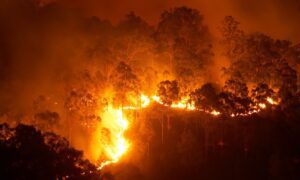Renewable energy projects 'caught out' by floods severity: WTW

Australia’s renewable energy industry could face higher premiums as underwriting appetite worsens after the country suffered its worst floods last year, broker WTW says in a report released today.
The report says several projects, most notably in NSW and Queensland, were “caught out” by the severity of the flooding with widespread damage to open trenches and unsealed roads, with some evidently failing to account for the cost of dewatering.
Dewatering refers to removal of surface water, usually at a construction site, and WTW says project owners and operators can mitigate this risk by purchasing spare pumps to remove excess water from foundations and trenches.
Every WTW client with a project in regions affected by the floods has been impacted in some way, Renewable Energy Leader John Rae said.
“That has not necessarily resulted in claims but, in several cases, project delays,” Mr Rae, who is also Construction and Natural Resources Leader, told insuranceNEWS.com.au today.
“When we look at what is happening in the renewables industry generally, projects with strong risk mitigation in place have not had claims, but weaker approaches have seen some significant claims.”
The record-breaking NSW/Queensland catastrophe in February/March – the first of many last year hitting the same areas – has cost about $5.72 billion in claims losses, making it the most expensive insured natural disaster in Australia.
“Three consecutive La Nina events have wreaked havoc in the renewable energy industry, catching many operators and developers out in terms of their risk mitigation, management and transfer,” the report’s section on Australia says.
“It has led to a major rethink, not only in terms of their approach to risk but also changes in working practices throughout the construction of new renewable projects.”
The report says many such considerations have led to increased costs for developers, after decades of practices geared around the prevailing drought conditions.
“Flood risk is not unique to Australia,” the report says. “Many of the changes in construction and development practices we are now seeing will have significant implications for renewable energy projects around the world.”
WTW says while flooding is directly responsible for a major shift in insurer attitude in Australia, other natural catastrophe perils across the country such as wind and hail damage, have added to the claims bill and resulted in a reduced insurer appetite for renewable risks.
“Project developers and operators are clearly on notice that anticipating adverse weather and planning an appropriate risk management strategy is now paramount,” the report says.
WTW says the reduction in insurer capacity and appetite has raised the importance of having a sound risk management program in place, especially for operators seeking the most favourable renewal terms.
“Insurer portfolios are running at a loss, resulting in increases in premiums, much higher deductibles and more restricted coverage,” the report says.
“All these restrictions have come into force for renewable energy projects over the last 12 months and, to be fair, have come as a bit of a shock to many.”
Mr Rae says it is difficult to provide a range for the rate increases as the scope of projects is “incredibly” varied.
“What I can say is where insurers don’t see appropriate risk controls on a given project, there is a very heightened likelihood it will attract a double digit increase,” he said.
Click here to access the report.




